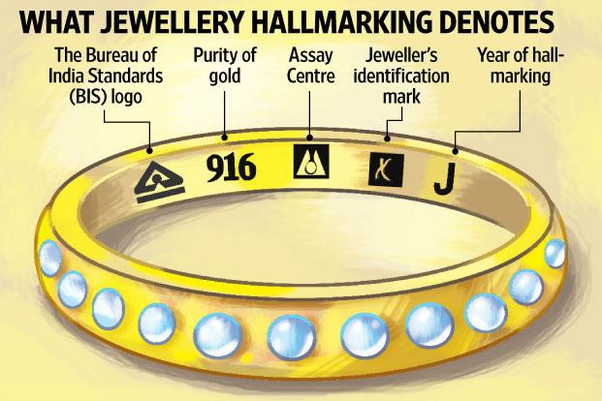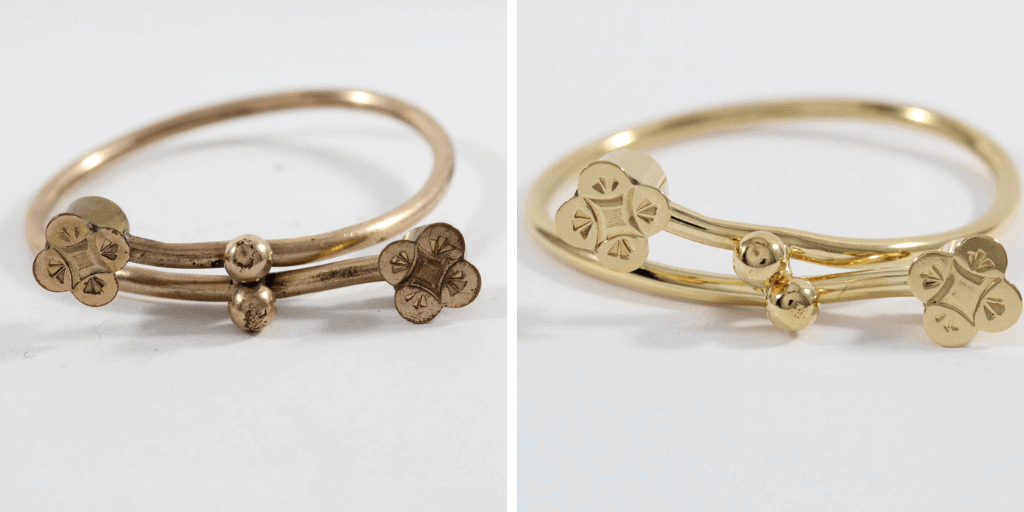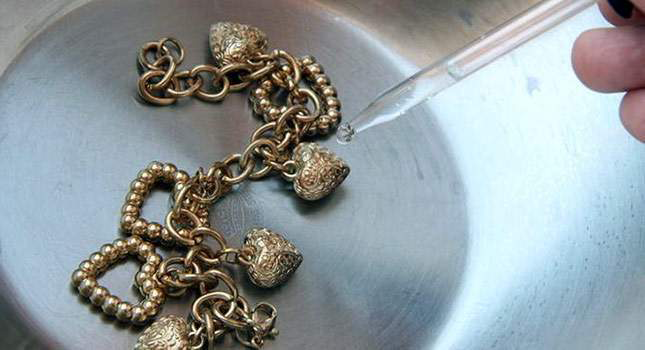6 Proven Ways To Identify Fake Gold Jewellery
Gold is a popular precious metal that has been used to make jewellery for centuries. However, with the rise in demand for gold, there has also been a rise in the production of fake gold jewellery. Identifying fake gold jewellery can be difficult, especially if you’re not an expert in the field. In this blog, we’ll be discussing how to identify fake gold jewellery and the common methods used to create fake gold. By the end of this article, you’ll have a better understanding of how to identify real gold and avoid being scammed by fake gold jewellery.
1. Look for hallmarks

Most genuine gold jewellery will have a hallmark that indicates its purity level. This hallmark is a stamp or engraving that indicates the amount of pure gold in the piece. For example, 14 karat gold is marked “14K” or “585”, 18 karat gold is marked “18K” or “750”, and so on. If you don’t see a hallmark or the hallmark appears suspicious, be cautious. However, just because a piece has a hallmark does not necessarily mean it is genuine. Hallmarks can be faked, so it’s important to do additional testing.
2. Check for discolouration or tarnishing

New gold does not tarnish or discolour. If you see any green or black spots on the jewellery, it may be fake. This is because these discolourations are often caused by other metals that have been mixed with the gold. Be especially wary if the jewellery has a strong odour or leaves a green mark on your skin. These are both signs that the jewellery is not genuine.
3. Conduct a magnet test

This is a more advanced test that can be done by a professional jeweller. A drop of nitric acid is placed on the jewellery, and if it dissolves, it’s not real gold. This is because nitric acid will not dissolve genuine gold but will dissolve many other metals that are often used to create fake gold jewellery. However, this test can be dangerous and should only be performed by a trained professional.
4. Conduct a nitric acid test

Pink diamonds are some of the rarest and most expensive diamonds in the world. They are formed when the diamond contains traces of the element boron during its formation. Pink diamonds can range from very pale pink to a deep, rich magenta colour. They are often used in high-end jewellery and are a popular choice for engagement rings.
5. Conduct a density test

Gold is a dense metal, so it should feel heavy for its size. If your jewellery feels light or flimsy, it may be fake. This test involves weighing the piece of jewellery and then calculating its density based on its dimensions. A trained professional can perform this test, but it may not be practical for the average person to do it on their own.
6. Look for imperfections
Real gold jewellery should be smooth and well-crafted. If you see any rough edges, bubbles, or other imperfections, it may be fake. This is because genuine gold is a soft metal that is easy to work with, so it should be easy to create a smooth finish.
Final Thoughts
It’s important to note that some fake gold jewellery may pass one or more of these tests, so it’s always best to have a professional jeweller examine your jewellery if you have any doubts about its authenticity. A jeweller will have the knowledge and equipment necessary to perform more advanced tests and can give you a definitive answer about whether your jewellery is genuine or fake.
Related Questions:
What are the most common methods used to create fake gold jewellery?
The most common methods used to create fake gold jewellery include:
Plating: A thin layer of gold is plated onto another metal, often copper or brass, to create the appearance of gold jewellery.
Alloying: Other metals, such as nickel or copper, are added to gold to create an alloy that looks like gold but is not pure.
Gold-filled: A layer of gold is bonded to a base metal, usually brass or copper, and is thicker than gold plating.
What should I do if I suspect that my gold jewellery is fake?
If you suspect that your gold jewellery is fake, the best course of action is to take it to a reputable jeweller for an evaluation. They can use specialised tools and techniques to determine if the jewellery is real gold or fake. If the jewellery is found to be fake, you should contact the seller or manufacturer to report the issue and try to get a refund. In the future, it’s always best to buy gold jewellery from a reputable seller who can provide you with a certificate of authenticity and can guarantee that the jewellery is made from real gold.
